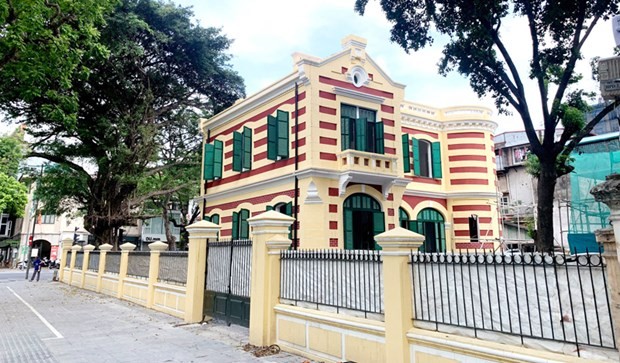
Preservation for Hanoi’s French-style villas should align with urban image
Latest
 |
| A French-style villa at 49 Tran Hung Dao street in Hoan Kiem district. (Photo: hanoimoi.com.vn) |
To preserve the precious architectural heritage, experts have suggested the format of adaptive conservation - a model that has been implemented and promoted effectively in many countries.
Hanoi currently has 1,216 villas with French architecture built before 1954, including 367 state-owned villas, 732 villas under mixed ownership between the State and households or between households, and 117 privately owned villas.
Those villas are valuable in terms of cultural history, urban landscape, and architecture, but many of them have seen serious deterioration in recent times.
According to architect Thai Vu Manh Linh from the Times Mirror International Architecture Joint Stock Company, with the change of institutions and the actual needs of the villa users, the villas are being severely damaged.
Architect Dr. Truong Ngoc Lan, deputy dean of the Faculty of Architecture and Planning at Hanoi University of Civil Engineering said that different owners do not fully understand the value of the heritage. Many architectural works have changed much compared to their original form.
When it comes to conservation, experts often judge through the value of the work. The French-style villas in Hanoi have great value in terms of economy, culture, society, and urban landscape. However, not much attention has been paid to promoting such value to serve today's demand.
Lan said that to preserve the work and exploit its socioeconomic potential, Hanoi should follow the adaptive conservation model.
“Preserving and protecting architectural value by the actual conditions and circumstances of society is a very good solution that we should learn,” he said, adding that it is a matter of "survival" as it relates to a treasure of huge, unique architectural works amid the hustle and bustle of contemporary life.
Architect Tran Ngoc Chinh, Chairman of the Vietnam Urban Development Planning Association also said that the adaptive conservation model can help people exploit socioeconomic efficiency from the works while preserving the core part of the architecture.
For French-style architecture, conservation must adapt and flexibly respond to each street block to match the unique nature of each site. This is important in places such as residential areas, public works, and mixed streets. Accordingly, in public streets, it prioritises the conservation and embellishment of public works and public areas and creates a connection with the surrounding landscape spaces. Preserve and embellish the shape and facade of the work to keep the originality of the work. In areas with both houses and public structures, it should be flexible in the renovation process so as not to affect the values to be preserved.
Legal and practical orientation both lead to a lesson that conservation needs to be associated with exploitation and value promotion. According to the experience of many countries around the world, to deal with the rich and diverse heritage in Hanoi, while resources are limited, the city needs to properly identify the value and classify the heritage to have suitable conservation and renovation scenarios, said architect Dao Ngoc Nghiem, Vice Chairman of the Vietnam Urban Development Planning Association.
According to him, many heritages need to be kept as original, and other structures require preservation in style, while others should be transformed completely.
Architect Thai Vu Manh Linh said that when it comes to the preservation of Hanoi’s French-style villas, "material - objects" value is talked about more than "spiritual - intangible" value. Meanwhile, in developed countries, urban architectural heritage has always been understood as the core element that creates the soul of the city, bearing great value that cannot be quantified.
Therefore, adaptive conservation is also to make the community understand properly and join hands in heritage conservation.

















